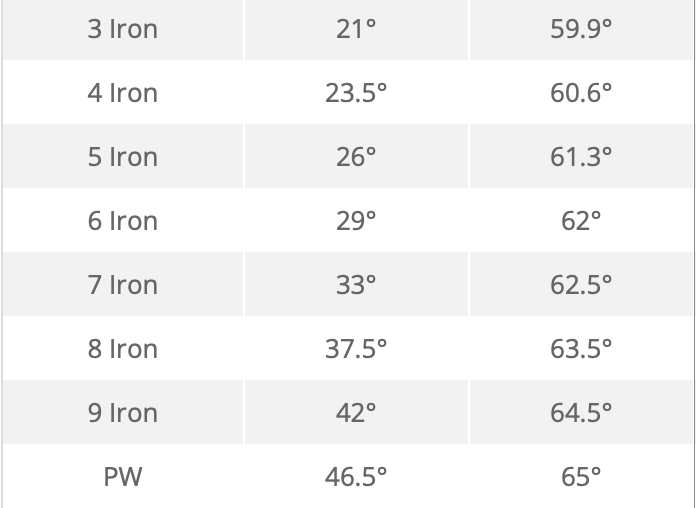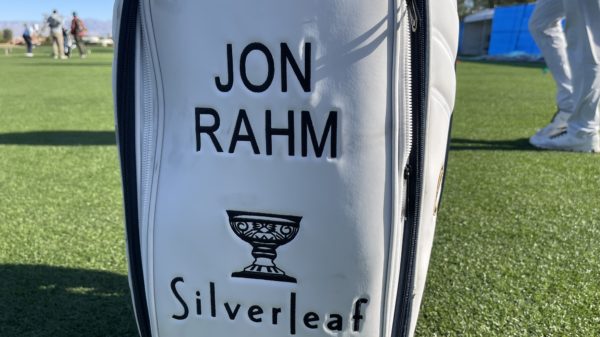No.
Loft jacking is not a thing. I’ll dispel all the rumors, conspiracy theories, bedtime stories, and everything in between. I’m writing this for my friends industry-wide that are in R&D and wake up every morning trying to do one thing, help you hit great golf shots.
I won’t even go into the physics weeds of it past this quote from Master Fitter Gerrit Pon who not only fits players every day but also is instrumental in live-action R&D testing at ECPC:

“The stronger lofts of the newer clubs are only part of the story. Other design elements of the modern distance iron come into play to produce a trajectory that one would associate with the # of the club they are hitting. Center of Gravity, offset, face cup, AI, even the shaft; these are all components that can help produce a trajectory that used to be achievable with a club that had more loft than today’s equipment.
If you still get a ball flight that looks like a (for example) 6 iron flight, but the loft is the same as an old 5 iron, what difference does it make? We have all these modern technologies to bring the flight up, which makes stronger lofts possible without a tradeoff. If you took an older iron and tried to squeeze more distance out of it by strengthening the loft, yes, you’d get a little more speed and less spin, but you’d also get a lower launch and perhaps a trajectory with less control.“
-Gerritt Pon Callaway Master Fitter
Let’s Begin.
It wasn’t long ago that loft was more or less the king of any iron design. There was a pretty black or white relationship between loft and the distance a ball flew. Most iron designs (even “forgiving” irons) had rigid faces, higher centers of gravity’s, and golfers had a choice between control (MB’s, forged Cavity Backs) and Forgiveness (bigger headed, perimeter weighted).
Look back for a second; even when the Big Bertha Iron was released in 1994 with its over-sized design, thinner face and hollow cavity, it was still more a less just a one-piece, cast cavity back that flew a little further than other irons in the market. The lofts weren’t all that much stronger than the player’s irons. The reason being, materials (Cast/Forged) and CG placements lived in a pretty tight neighborhood.
The physics allowed it.

Look pretty dang close to the TCB specs if you ask me. To be fair we will call the OG BB irons a degree to a degree and half stronger than what the player’s irons look liked in that day.
Loft progression in the mid 90’s looked like this from 3-Iron to PW
21-24-28-32-36-40-44-48
So now lets warp 27 YEARS!!!!!
So Whats changed?
For one, the ball went thru a complete transformation in 1999-2000. The modern ball launched higher, faster with less spin and everyone and their cat picked up 20 yards. Yes, it was a pivotal point in Golf, but now that WE, the golfers, knew that we could get longer and faster by doing very little physically, the whole golf industry pushed R&D to the limits to satisfy the market. And thank God for that.
Keeping this in the iron category, we began to see thinner faces, multi-material construction, hollow body, lower CG placements, and the more we dug in; the less loft became the thing. The loft is now just one ingredient in a multi-ingredient stew.
If we use Apex ’21, for example, with what would be considered a “loft jacked” package, if you look at the physics behind it, the offered lofts are not to help you hit it; further, it’s that way so you can control it. Period. End of Story.
For example, take my personal set; I bent all of my Apex 21’s 2 degrees weak to reduce the offset, but I also had to put REALLY stiff shafts in them to keep the launch in a controllable window. Suppose I don’t do that; the ball flies literally all over the map. Trust me; I tried it.
But now my gapping is all screwed up
No, it’s not. Maybe if you are completely attached to the number on the club and the loft, sure. But that’s not modern golf—players on TOUR back into a loft, not the other way around.
If Phil’s pitching wedge ends up being 44 degrees but flys out of the window he wants and carries right on his number, he could care less. PW lofts on Tour go from 39 degrees (you know who) to 48, which would be considered weak. In those wedges, both of the players backed into that loft number to hit a number at a certain spin and launch window.
So does your gap wedge now creep into the 48 degree range? Maybe. Maybe not. In all honesty we should all be just writing the yardage each club goes on the head and pay no attention to the number or the loft. These days it’s not that important. It’s just not.
So yes, a 2021 4-iron is at a traditional 3-iron loft, but it’s not some OEM conspiracy to cheat you into thinking you are Thor. It’s building in performance, launch, forgiveness, and ball speed so you, the golfer, can go and hit some great shots. The ball isn’t going longer because the lofts are stronger; if that were the case, an MB 7-iron at 32 would fly just as far as an Apex 21 in the same loft. Not the case.
On Tour lofts have gotten stronger as well but in no way shape or form is it to hit it further, it’s in response to the golf ball
Look at it like this. When you lower the CG (Launch), add in a fast face (ball speed), and use a low/er spin AND high launch, the only thing you can do to add stability is lower the loft. So as you can see, the loft has become less about distance and more of a governor for control.
Remember when you used to stick a tee in the governor of a golf cart, and it would go 3x as fast? Was that cart more in control or less? I crashed one golf cart in my day….it had a tee in it.
So is LOFT important? HELL YES! But is the ball flying further ONLY because the lofts are stronger? No.
From a level of importance in regards to distance (In My Opinion)
- Head Construction/Face/CG
- Loft (Control/Distance)
- Shaft
Thank You.




















Lennart Gullberg
November 12, 2021 at 10:12 am
Great stuff! Took away with an illution and replaced it with confidence !
Donald Beck
November 12, 2021 at 3:01 pm
Sorry, maybe what you are writing now is relevant, but when this started happening, it was done primarily to get golfers to believe they were “Thor”. Your article can talk all you want about “windows” and distance, but the fact of the matter is that after jacking the the PW, the companies had to come out with a club that fit between the new PW and the Sand iron. Called it a Gap wedge. You can’t tell me that all those good player characteristics you are talking about couldn’t have resulted in the companies putting the P on the new GAP wedge. But once one company jacked the irons, then they all had to do it or risk being the shortest PW out there. The average golfer that this was aimed at back then could give a fig about good “windows”, better consistency, all they saw was brand X was getting all the hype because their sand wedge went 10 yards further. I saw it, lived through it, explained it to a lot of people back then. No amount of technical articles now, no revisionist history, no group speak will change what actually happened. What is really important now however is that people are cognizant of getting fit so their yardage gaps make sense and in that, you are right, the designation on the club is irrelevant. Now, but not back then. Back then, it was an arms race, no mistake about it.
donald beck
November 12, 2021 at 3:04 pm
“The average golfer that this was aimed at back then could give a fig about good “windows”, better consistency, all they saw was brand X was getting all the hype because their sand wedge went 10 yards further.”
Sorry that should be: “The average golfer that this was aimed at back then could give a fig about good “windows”, better consistency, all they saw was brand X was getting all the hype because their PITCHING wedge went 10 yards further.”
Johnny Wunder
November 12, 2021 at 3:08 pm
This is a great response and I agree with it on many levels. YES for sure there was a time when cranking the lofts down to more or less disguise distance gains was a thing. I wrote about it a few times. That’s not the reason today and that’s what this article is referring to. Every year with a new release the convo is about how strong the lofts are with ZERO reference to actual physics. So Yes I agree with you and appreciate the time it took to share your thoughts. But the “loft jacking” magic trick isn’t a trick these days.